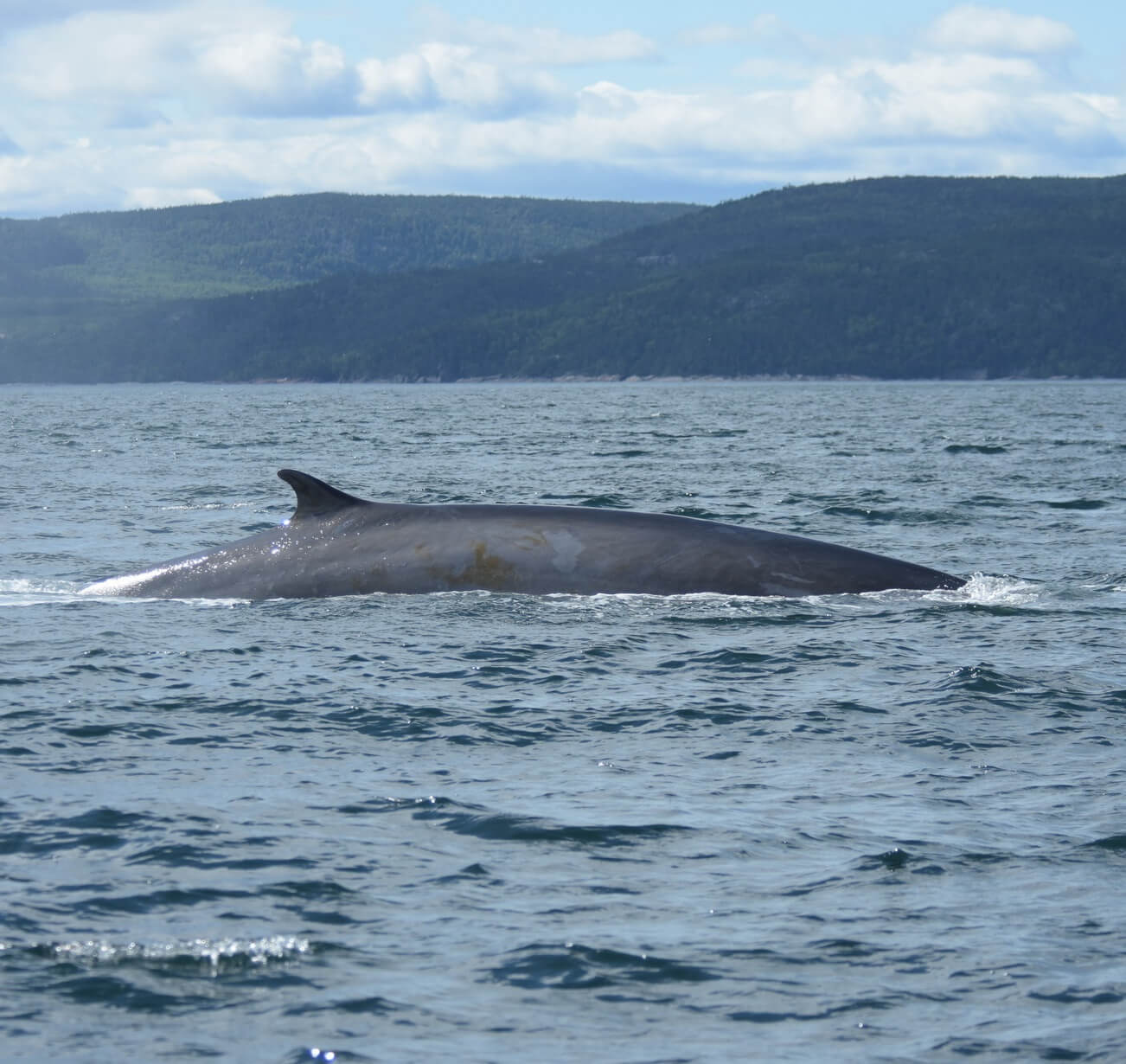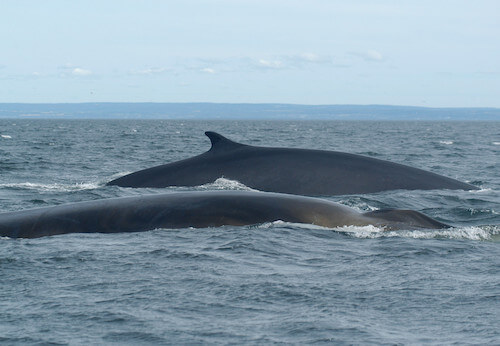It is sometimes said that Tic Tac Toe, Capitaine Crochet or Ti-Croche are “faithful” whales, but what does this really mean? And no, we are not talking about fidelity to a romantic partner here! Whales do not have regular breeding partners. Rather, this is a question of loyalty to a specific feeding ground such as the St. Lawrence Estuary. A few studies conducted on the River’s fin whale population have been used to place individuals of this species into one of three categories: seasonal residents, regular visitors or occasional visitors.
First steps
To determine an individual’s degree of fidelity, researchers use specific parameters that vary from species to species. Of all the cetaceans that frequent the St. Lawrence, fidelity was only assessed in fin whales.
In order to create visitor categories, researchers calculated the inter-annual return rate, i.e. the number of summers over a given number of years during which individuals were observed. For example, for an individual to be considered a faithful seasonal resident, it must be seen four out of every five years. Regular visitors, on the other hand, are seen 40 to 75% of the years, and occasional visitors, less than 40%. These thresholds were established by Robert Michaud and Janie Giard in 2000.
Next: staying a while
In recent years, GREMM researcher Timothée Perrero has taken over the reins of fin whale identification while taking visitor categorization one step further. “It’s all well and good to have observed an individual once every summer for five years, but that doesn’t necessarily mean it’s a resident. A resident remains in the same area for several days. So the next question to ask is, “When a fin whale arrives, how long does it stay?” he explains.
Timothée thus added a new parameter to evaluate an individual’s degree of loyalty: the seasonal rate of frequentation.This figure is calculated by dividing the number of weeks an animal is present by the total number of weeks in the summer season. The most faithful individuals spend about four weeks in the River each summer.
Data are key
How do researchers know when and how often fin whales roam the Estuary? The answer is simple: they spend countless hours on the water aboard their research boat, combing the territory and photographing the individuals they encounter. More precisely, a team of scientists is dedicated to fin whale photo-identification two days a week for the entire summer. The more frequently researchers photograph the same whale over the summer and years, the more they assume that this individual is present often and for extended periods.
A total of five to ten seasonal residents use the River every summer. They are often well-known stars in the Marine Park such as Capitaine Crochet, who was seen nearly every year from 1994 and until she disappeared in 2013, and her calf Ti-Croche, observed every year since 2016.
In fact, fidelity might be passed on from mother to calf. For example, Ti-Croche may have picked up the habit of coming to the Marine Park with its mother Capitaine Crochet, before later choosing to return on its own once it reached adulthood. However, this is mere speculation; researchers put forward this hypothesis, but have not yet corroborated it.
Even fidelity doesn’t last forever
Fin whales have a lifespan as long as our own. Much like humans who change homes, cities, or even countries throughout their lifetimes, it’s no wonder that whales’ fidelity to a particular site varies throughout their lives!
A number of events can alter an individual’s degree of loyalty. If a fin whale suffers an entanglement or a collision in the St. Lawrence, it may choose not to return the following year. Likewise, if it is unable to get enough to eat one summer, it may decide that the same region isn’t worth it the following summer.
By recognizing the most faithful individuals through photo-identification and categorization, researchers can better understand the behaviour of individuals and groups, and are especially able to better identify environmental changes that might influence individual behaviour. This gives them insight into the presence or absence of sufficient food resources and on general disturbances such as noise pollution and shipping and boating traffic. “Let’s suppose a seasonal resident normally stays ten weeks, and this year it’s observed only three weeks, for me that sends a signal about the health of the ecosystems. If we lump these faithful individuals with all the others, we might not necessarily notice these signals,” concludes Timothée Perrero.








